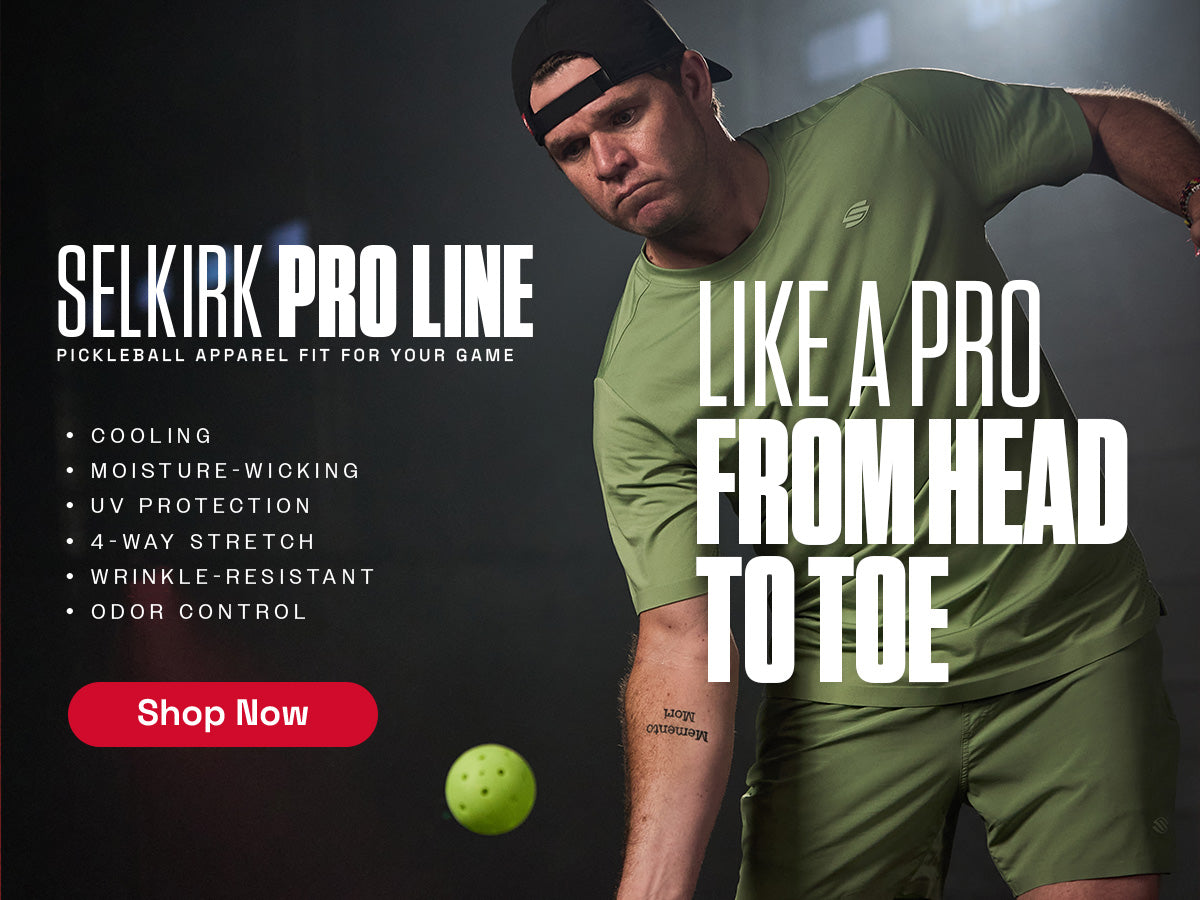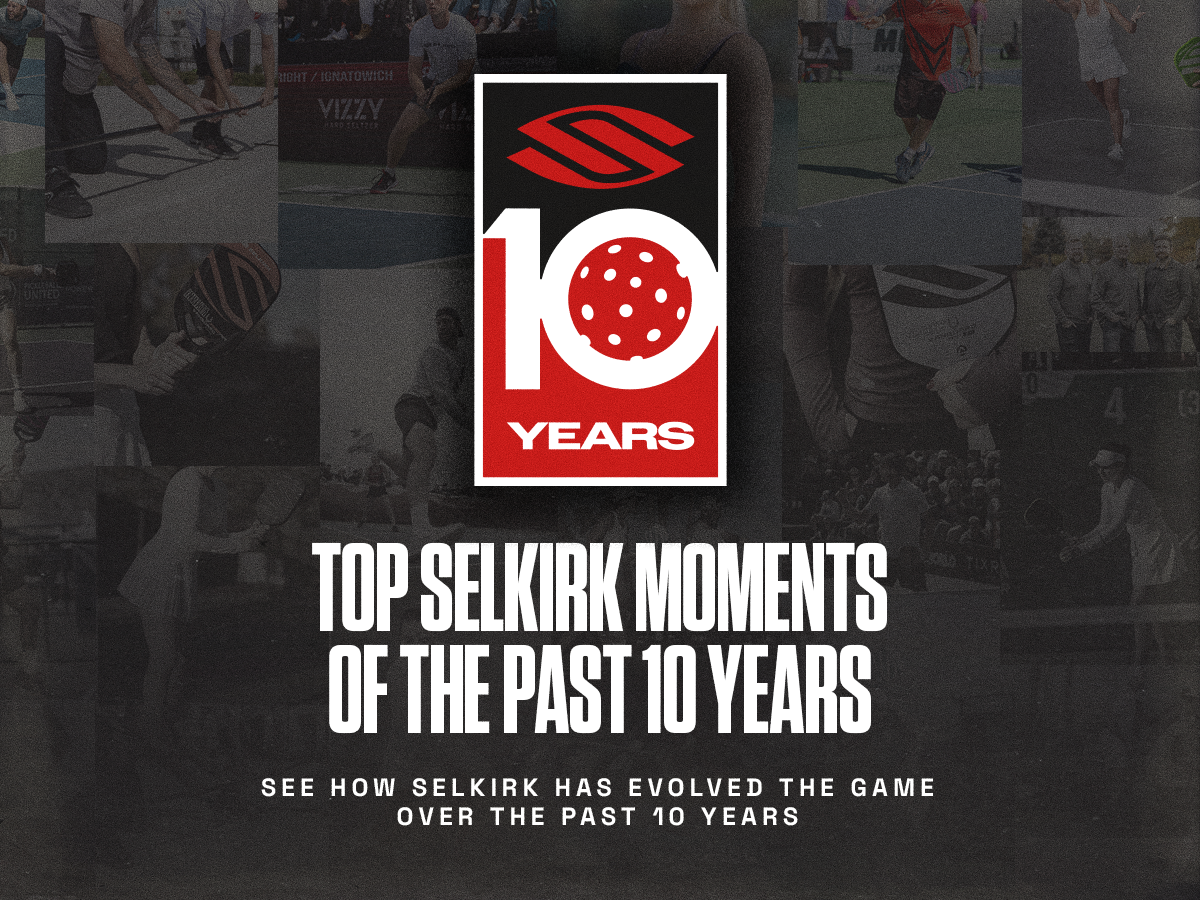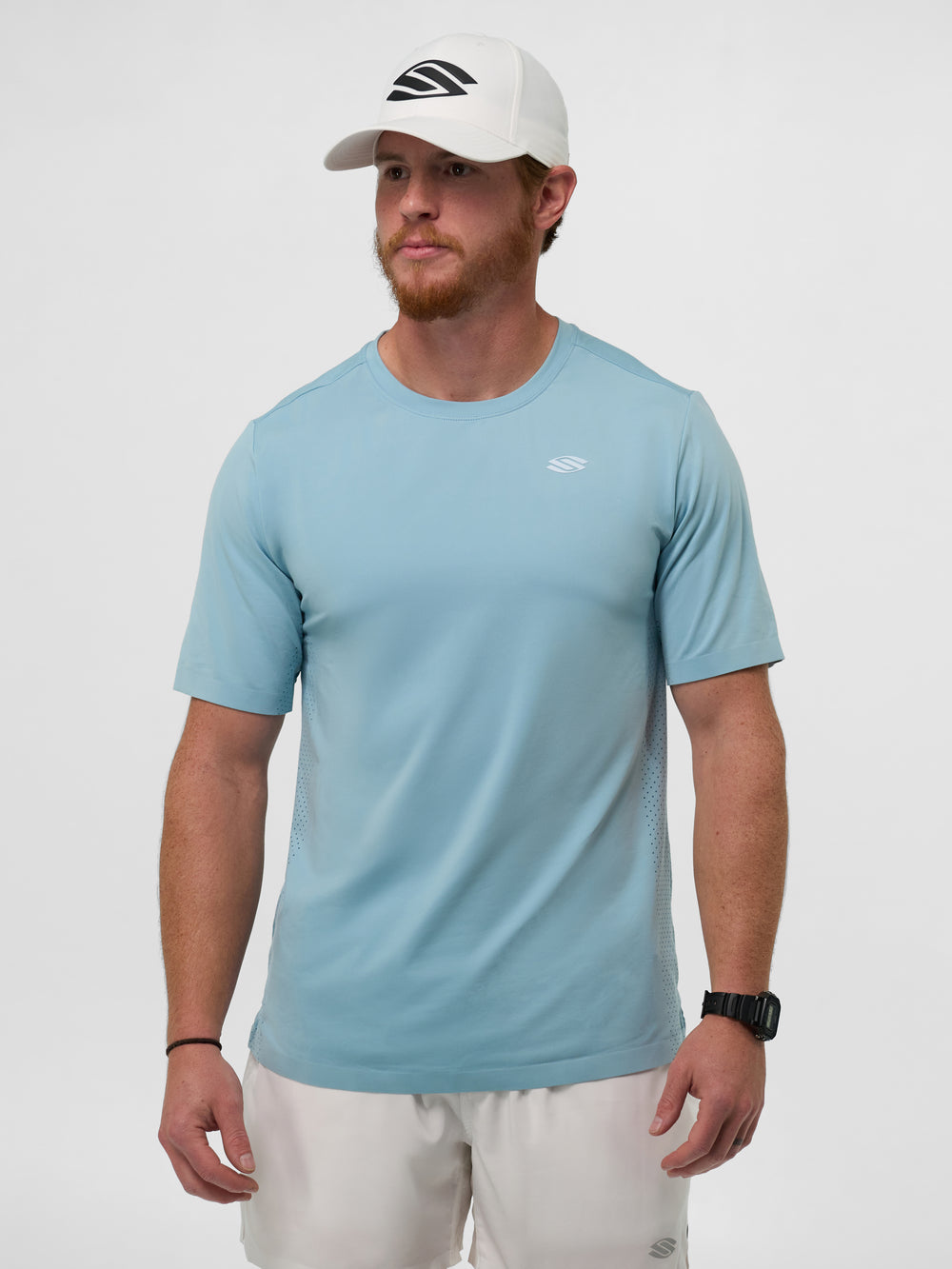Finding the proper balance between power and control is the key to a well-rounded pickleball game.
Go too far in one direction, and you risk pop-ups. Lean too far the other way, and your game might lack the explosiveness to keep up. Fortunately, you don’t have to choose one over the other.
Learn these techniques to generate more power during play and what paddle features to look for so you can hit harder without losing touch.
Improve your body mechanics to unlock natural power
Power starts with your body, not just your paddle. By focusing on proper mechanics and efficient energy transfer, you can generate more pace on your shots without swinging out of control.
Engage your legs and core
Many players rely too much on their arms when trying to hit powerful shots. Instead, use your legs and core to drive your swing.
Think of power as starting from the ground up — bend your knees, rotate your torso, and let your hips lead your shot.
Use a full follow-through
Cutting your swing short on drives and serves limits both power and accuracy. A full, smooth follow-through allows your paddle to stay on its intended path and transfer maximum energy to the ball.
Swing from low to high and finish your swing path with your paddle over your non-dominant shoulder.
Make contact with the ball out in front of your body
To maximize power, meet the ball slightly in front of your body. Contacting the ball too late robs you of leverage and often leads to weak or misdirected shots.
Master shot selection to hit with purpose
You don’t need to hit every ball with full power. Strategic power comes from knowing when to accelerate the ball and when to reset.
Attack high balls
When your opponent pops up a ball, that’s your chance to drive through it with pace. These shots allow for more aggressive swings without compromising control.
Mix up speeds
Alternating between fast and slow shots keeps your opponents guessing and creates openings for more powerful drives.
Be selective at the kitchen
Power at the net should be used sparingly. At the kitchen line, speed-ups and counters should be compact and controlled to avoid pop-ups. Focus on placement and timing rather than brute force.
Choose a paddle built for both power and control
Your paddle can make a huge difference in how easily you generate power while maintaining feel. Here’s what to look for:
Core thickness and material
Paddles with thinner cores (around 13 mm) offer more pop and raw power, while thicker cores (around 16 mm) provide better touch and control. Paddles that use advanced polymer or foam cores aim to strike a balance between the two.
Carbon fiber faces
Carbon fiber paddle faces provide a stiff hitting surface that transfers more energy into the ball, which translates to power. At the same time, carbon fiber enhances control by offering a consistent response and excellent spin potential.
Paddle weight
Heavier paddles (around 8.0 oz or more) generally produce more power. Just be sure you can still swing quickly enough to respond to fast exchanges at the net.
Handle length
A longer handle allows for increased leverage and two-handed backhands, which can generate more power, especially for players transitioning from tennis.
Train with the intention to build consistency
Improving power isn’t just about physical strength — it’s about muscle memory, timing, and confidence.
Drill your power shots
Spend time practicing drives, overheads, and counters in a controlled environment. Drills allow you to fine-tune technique without game-time pressure.
Watch your grip pressure
Tight grips can reduce paddle head speed and increase tension in your swing. Try loosening your grip slightly to allow for smoother, faster movement.
Track your progress
Use video analysis or a coach’s feedback to identify where you can improve efficiency in your swing mechanics.
























































